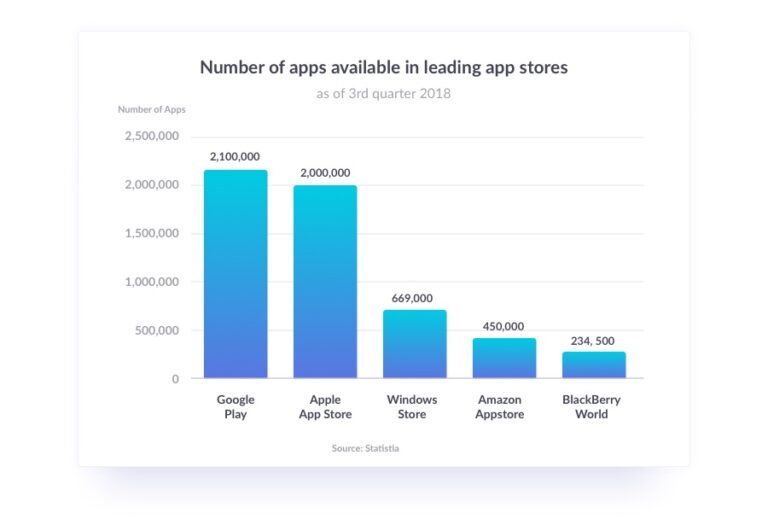How to track mobile app installs and why
Mobile app install tracking is when companies count the number of people who have downloaded or installed their app and attribute those downloads back to the marketing efforts that drove them, such as digital ads. Tracking installs is difficult—there are many app stores, and they don’t always share data. To track installs, most companies need a tracking partner.
Why is knowing mobile app installs useful?
Knowing the total number of app installs helps teams measure success. More installs means they’re acquiring more users—a sign that their marketing and growth strategies are succeeding. But like website traffic, install counts can be misleading unless considered in conjunction with other metrics. Just because thousands of individuals installed an app doesn’t mean the app is successful. If most users churn after one day, the app developer can’t make money selling subscriptions or ads. If the developer paid to acquire those churned users, they could even lose money. Focusing solely on app installs can mislead companies into thinking their app is more successful than it actually is. Always pair mobile app installs with engagement metrics such as:
Used responsibly, however, mobile app install tracking is an indispensable indicator of growth. Without installs, there are no users. Teams that know whether their install rate is growing or declining and what sources the installs are coming from can adjust and improve their product, marketing, and customer service to make sure those users grow into profitable customers. App install data is also particularly useful given that digital advertising is growing more expensive. Driving app downloads with ads on Facebook or Google’s networks cost more than it did just a few years ago. Teams can use their install data to create more targeted ads to increase their performance and focus on the cohorts and segments that are most likely to download.
How does mobile app install tracking work?

When users install apps, they leave a trail of data such as where they downloaded the app from, how they got there, and their demographics. But capturing that data is a complicated affair, for three reasons: The mobile market is fragmented: There are five primary mobile app store providers who each enforce their own rules. User journeys are complex: Users take circuitous journeys on their way to installing an app. They often take actions app providers can’t track, such as discuss the app in-person, and interact across multiple devices. App stores are walled gardens: To download apps, users visit app stores, and developers have limited visibility into what goes on within them. App stores such as Google PLAY and Apple’s iTunes provide analytics to developers, but the data is aggregated and offers a static and often incomplete view. Because each app store has its own rules for how it tracks users and what data it shares, app install tracking is very different than web visitor tracking. On the web, there are standardized methods for tracking users regardless of which browser they use. With app stores, teams must log into each app store’s analytics to pull limited, high-level viewer data and install information, and do the same for their advertising platforms. Ad platforms may offer tools to track or approximate app install data, but they aren’t always accurate. Teams must go through the extra step of installing a snippet of code to verify the installs, and if the company advertises on multiple platforms at once, which is fairly standard, their inventory may overlap and one install may appear to be three or four.
Examples of mobile app install tracking
Lemonade increases downloads
The tech-driven insurer Lemonade used Mixpanel to discover that many people visited its landing pages from a mobile device. Eager to drive those users to its app, the team redirected mobile visitors to download the app rather than go through the web flow, but this led to a steep decline in new user growth. With analytics, they could see users wanted to complete their actions on the web first. By improving their web flow for mobile and prompting users to download the app later in the process, the team increased installs.
Read the Lemonade case study
Grabr drives downloads in specific markets
The peer-to-peer shopping app Grabr didn’t initially know where its top users lived, or how they’d use the app. “When you’re building something new, there are lots of unknowns,” said Christina Leigh Morgan, Marketing Director at Grabr. “We needed a way to eliminate the guesswork.” By tracking how users referred their friends, the team was able to improve its signup flow to earn twice as many referral app installs.
Read the Grabr case study
Viber increased user engagement
The messaging app Viber serves over one billion users around the globe, and uses Mixpanel to track visitors beyond downloads to make sure they’re successful. By A/B testing the buttons on users’ keyboards, the team was able to increase messaging by 15 percent, keeping new users for longer, and giving them a chance to build a habit around messaging with Viber.
Read the Viber case study
How can I track mobile app installs?
To track mobile app installs in an efficient manner, most teams turn to user analytics. A user analytics platform provides all the tools they need to automatically ingest data from multiple app stores and advertising platforms and to produce reports that are accessible to the entire team.


